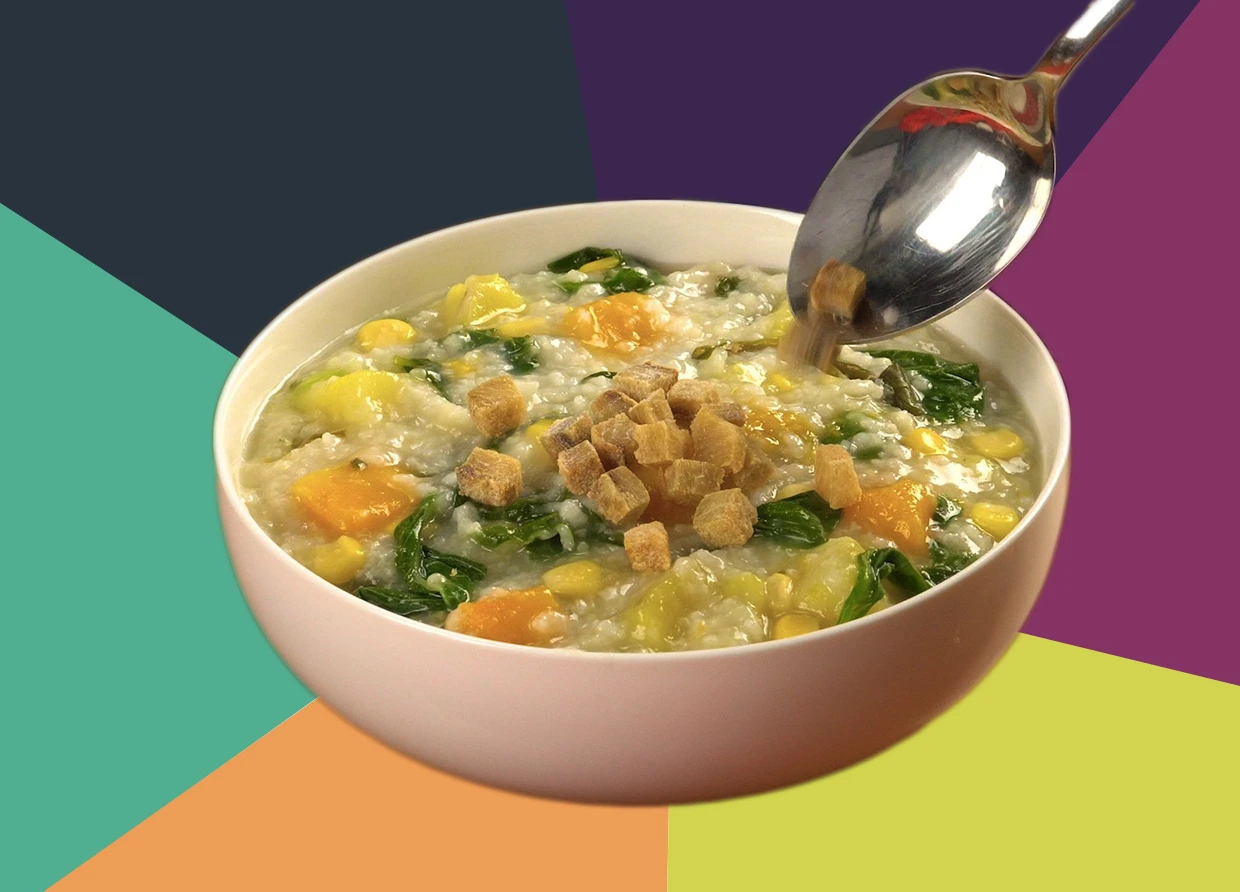TINUTUAN, THE REFLECTION OF MANADONESE'S SPIRIT OF SURVIVAL
Untold and lesser-known stories of the delectable congee.

The city of Manado in North Sulawesi is well-known among domestic and foreign tourists because it has a variety of charming destinations, like a diving spot in Bunaken Marine Park. Manado is also known for its delicious delicacies that use extreme ingredients, like bats, rats, pythons, lizards, dogs, and monkeys.
However, not all foods in Manado are extreme. There are still many traditional dishes that are "normal", and of course, worth trying, like Tinutuan, or Manado porridge.
Congees are a common favorite in Indonesia, and it's no wonder that Tinutuan is one of the local favorites. Usually served for breakfast and dinner with a range of toppings, people would also eat Tinutuan when they feel under the weather.
What makes Tinutuan special?
Unlike the common chicken porridge, Tinutuan is made from a mixture of rice, pumpkin, yellow sweet potato, spinach, kale, corn, basil, and gedi leaves which are often found in North Sulawesi.
After being cooked, Tinutuan is served with deep-fried salty fish called jambal. Some use skipjack fufu or smoked tuna, corn cakes, nike cakes, fried tofu and tempeh, chili roa, chili dabu-dabu, onions, and salted tomatoes.
Tinutuan can also be mixed with noodles or Brenebon, Minahasa's signature red bean soup. Sometimes they serve the congee with noodles, which creates an entirely "new" dish called Midal. When Tinutuan is combined with Brenebon, on the other hand, bits of beef or pork leg are also added to it.
Generally, Tinutuan has a complex and unique taste. You can feel it when you eat it for the first time. It has so much topping on it, and the taste is a combination of savory and spicy. The key to the dish is none other than the gedi leaves.
The leaves act as a natural thickener and make the taste more flavorful. It is rich in protein, vitamins, fibers, and iron. Local people often cook the leaves with bamboo shoots, taro sweet potato, salted fish, and skipjack fufu.
Fun fact about Tinutuan
The name of Tinutuan comes from the word tuut, which means rice or porridge. Some regions call it Tinu. While in Tondano, some people call it Sinede'an, and in South Minahasa, they call Pedaal. Although the name is different in each region, the taste and appearance are quite the same.
The unique dish can't be separated from its history. Times ago, the economic situation of Manadonese was difficult. To survive and save money, they cook vegetables with a small amount of rice and cook them all together until they become porridge.
Manadonese and Minahasanese believe that Tinutuan defines a peculiar identity because local women, no matter how old they are, are required to make Tinutuan. If someone who lives in Manado can't make it, they are "outed" as a non-Manado native.
Beneficial nutrients of Tinutuan
A clear indicator of a perfectly prepared porridge is when the yellow colors of the pumpkin, sweet potato, and corn have fused with the color of the rice. The natural sweetness of these three ingredients combined with a spicy flavor plays an especially essential role in Tintuan's unique taste.
The congee is normally complemented with freshly cut tomato sambal and ricaroa, a fish-flavored chili sauce. Tinutuan porridge is also served with salted fish and sometimes comes with added noodles.
One serving of Tinutuan is said to meet all your nutritional needs for the day as the wide variety of vegetables included in the mix are high in vitamins and rich in nutritional value. To try this tasty dish yourself, visit Wakeke Road, a crowded and popular street lined with rows of stalls selling Tinutuan as well as other typical Manadonese dishes.
In the evenings, visit the Boulevard area by the sea, which becomes a hive of activity at sunset. This area has rows of restaurants serving Manadonese dishes and other delicious cuisines.
#THE S MEDIA #Media Milenial #tinutuan congee #tinutuan porridge #manado #North Sulawesi



























